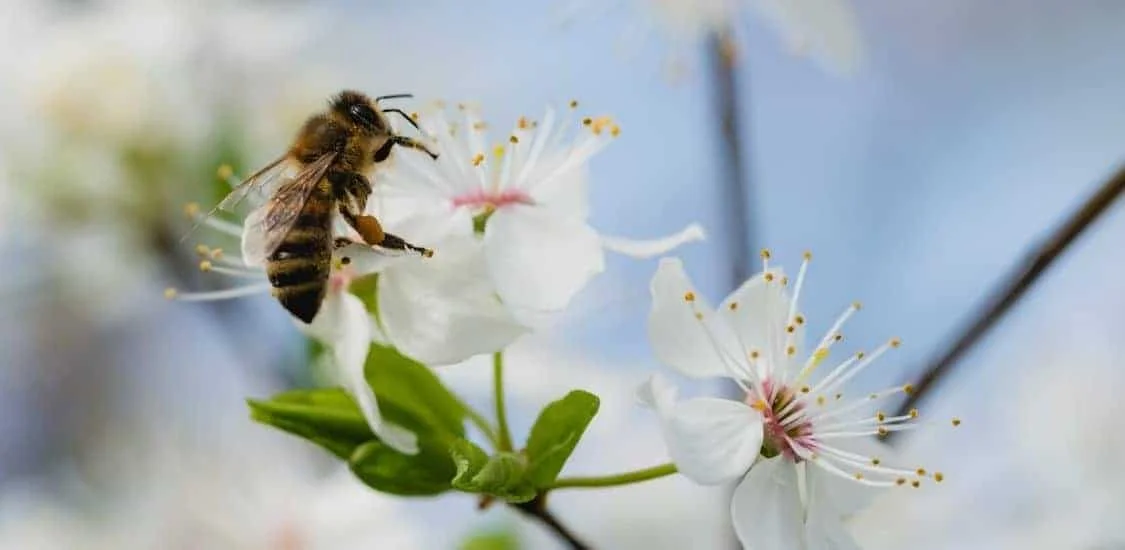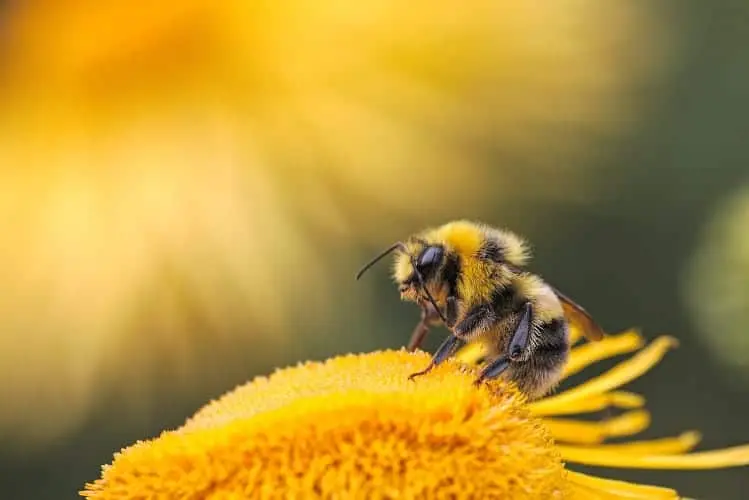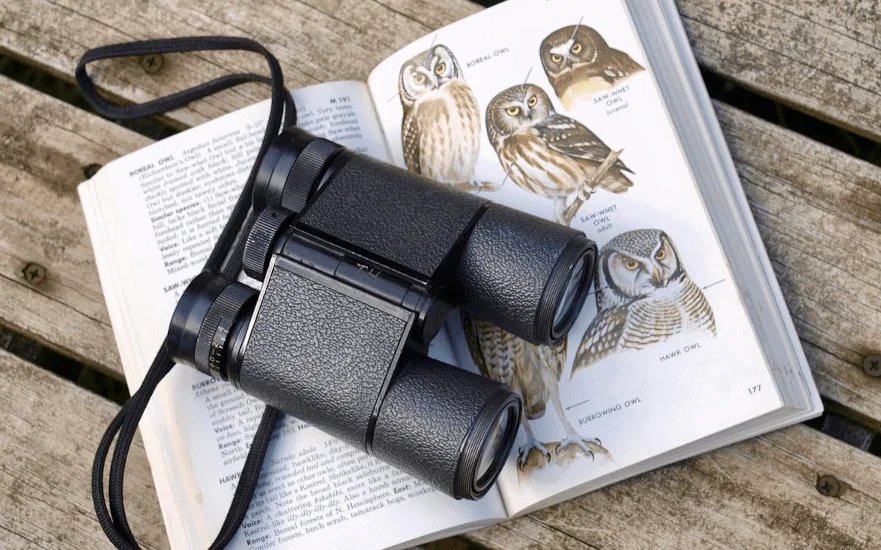
Bees play a vital role in the environment, helping to spread the pollen of flowers and plants which helps them to repopulate. But they also create honey from the nectar that is gathered which you can find on the table of most homes around the world. Awareness of their importance to our eco-system has risen in recent years and has resulted in many people wanting to attract more of them to their yard. This article will give tips on attracting bees to your yard as well explaining why bees are important for the health of your yard, as well as the well-being of the greater eco-system.
The most familiar is the honeybee, but they only represented one species out of roughly 20,000 that have been catalogued. In addition to honeybees, the second-most familiar might be the larger bumblebee. Bumblebees may seem fierce, but they tend to be docile around most people.
Bees have been a part of human history long before civilization began. No doubt that humans and bees began interacting when the first caveman tasted the honey from a beehive. From that first experience came the many bee farms that produce honey around the world.
But there are important questions that need to be answered for those who may want to take up beekeeping or simply appreciate what bees provide in our lives.
How to Attract Bees to Your Yard?
If you are interested in bringing bees to your yard, you will need to decide which type of bee you want. Basically, the choice is between honeybees or bumblebees, but both serve the purpose of pollinating the fruits and vegetables along with the flowers that grow in your garden.
1. Keep Your Lawn Natural
This means having a lawn with a variety of plants and yes, weeds. Perfect rows of grass will not attract any bees because there is no food present. So, you should find plants that are native to your area of the country that provide a food source for the bees.
2. Dandelions
Yes, dandelions are considered a weed, but they bring the bees to your yard. Their bright, yellow color attracts the bees and provides them with plenty of food. If you are not a big fan of dandelions, you can keep them in part of your yard.
3. Avoid Pesticides
The number one killer of bees is pesticides. This is not intentional, but the very chemicals used to destroy weeds also kill the bees. Find more natural ways to rid your yard of weeds and keep the pesticides at bay.
4. Puddles
While birds enjoy birdbaths, so too do bees love water. However, they are not attracted to larger pools of water that birds love to bathe. Instead, you should set up small puddles of water that include a few small rocks for the bees to perch. This way, the water will not drown the bees. A couple of small plates or saucers will do the trick.
One possible downside is that puddles also attract mosquitoes, so be sure to empty and refill the dishes with fresh water to cut down on the mosquito population.
5. Create a Nest
Building a nest for bees is no problem if you have some dead wood or a dead limb on a tree in your yard. Bumblebees will often find homes inside the wood if you drill a few holes. For honeybees, the holes will have to be deeper, but you may also purchase a bee box which will work just fine.
What is the best time of year to attract Bees?
Generally speaking, the best time of the year to attract bees is when they are looking for sources of food. This usually means the early spring when the warmer temperatures bring out the bees and in the late fall when many of their food sources have gone dormant, but the temperatures are still warm enough for them to be active.
It should be noted that bees are not as populous as they once were. With their habitats being destroyed, pesticides which often wind up killing bees, and the changing climate have all contributed to bees becoming scarcer than before. That is why it’s so important to help bees by creating suitable habitats and leaving them alone to do their job.
The need for bees is greater today than ever before. Unfortunately, if we do nothing, then it will become difficult for the bees to survive which in turn affects our health and wellbeing.
How Long do Bees Live?
To answer the question, it’s important to note that there are three types of bees;
- Queen (3-4 Years)
- Worker (2-3 Months)
- Drone (2 Months)
The queen is the reason for the hive. She is the one who reproduces to supply the worker and drone bees. You’ll only find one queen in the hive as any other queens are either killed or they move off to form their own hive. A queen bee will usually live from three to four years on average, dying after they lose the ability to reproduce.
The worker bees are also female and as their name implies, they do all the work for the hive. They gather the nectar from the flowers which is used to create the honey to feed the young. They also maintain the structure of the hive and help the queen. The life of a typical worker bee is generally two to three months, although during the winter when there is less activity, they may live up to several months.
The drone is the male bee whose only function is to mate with the queen. Once they have fulfilled that function, they usually die or are kicked out the hive. They have the shortest life span of all the bees with most living only for a couple of months. Even the ones who do not die after mating and are kicked out of the hive do not live for very long.
How do Bees Make Honey?
Bees get the properties they need to create honey from flowers. To gather enough nectar from the flowers to create a pound of honey, the bees have to fly over 55,000 miles and visit up to 100 flowers per bee on each trip. It takes over 555 foraging bees to gather nectar from over 2 million flowers to make a single pound of honey. A single bee that visits up to 100 flowers per day on foraging trips will produce a total of just 1/12th of a teaspoon over its lifetime.
The males or drones and the queen do not forage for honey, only the worker bees. The workers gather the nectar and bring it to the hive. With the nectar in their mouths, the bees will secrete an enzyme which mixes with the nectar. When the worker reaches the nest, the nectar is passed from one bee to another which in turn creates the honey.
The honey is then placed in the cells of a honeycomb which are made of wax. The honey is kept inside each cell until it is needed. As the honey is placed in each cell, the bees will flap their wings to dry out the honey and then seal the opening of the cell.
What is the Difference Between a Bee, a Wasp, and a Hornet?
Despite some similarities in terms of their size, wings, and population, there are considerable differences between bees, wasps, and hornets. Bees are furry and gather pollen to make honey which is their food source. Wasps are not furry and are carnivorous in nature. Hornets tend to be longer and have a different color compared to bees.
Another difference between bees and wasps is that bees tend to leave people alone and even if provoked will only pursue for a short distance. Wasps however are known to attack unprovoked and if angry will continue to chase you for hundreds of yards.
Bumblebees tend to be pretty large and noticeable, plus unlike honeybees will not die after they sting. However, most bumblebees tend to be peaceful and usually will not attack unless provoked. But in any case, bees are an important part of the environment and play a strong role with humans as part of their daily lives.
Honey Bees
Wasp
Hornet



Why Bees are Important to Humans?
Because we see bees so often, it is easy to underestimate their importance to the human race. Without bees, it would be more difficult for humans to enjoy a stable, healthy food supply. There are good reasons why bees should be appreciated for the contributions they make on a daily basis in our lives.
Pollination: Because bees help flowers and plants through pollination, they help to grow the food that we all enjoy. The continuing cycle of pollination means that the cycle of life keeps going as well. when you consider that nuts, berries, and squashes are all products of pollination, you can begin to see why bees are so important. Add to this the many wildflowers that would not exist without the bees, and the world becomes a less-beautiful place.
Although bees carry a sting with some people being allergic, for the most part the presence of bees in your yard is nothing to worry about. They are busy gathering nectar and have little interaction with humans apart from beekeepers who create artificial nests which produce honey. In fact, having bees in your yard can be a good thing which is why you might want to attract them.
Bee Fun Facts!

More Articles.

Best Camera For Bird Watching 2020
Article Summary: Best Budget Camera: Nikon D500 DX-Format Digital SLR Best Mid-tier Camera: Canon EOS

Best Binoculars for Bird Watching 2020
Article Summary: Best Budget Binoculars: Nikon 8250 Aculon 16×50 Best Mid-tier Binoculars: Nikon Monarch 5

About Us
We are avid bird-watchers who recently retired, allowing us more time to travel the world. Fortunately, we have managed to visit numerous countries around Europe, Asia, and America. Watching and photographing birds has been a passion for many years and we are making the most of the extra time on our hands!
